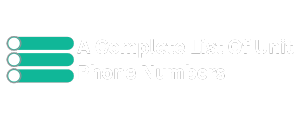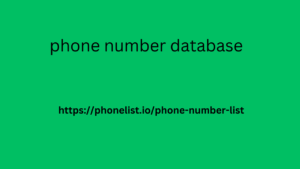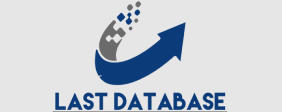Image SEO (image ranking) means that when users use keywords to search for images, search engines will rank these images according to a series of algorithms. Only images with higher rankings are likely to be discovered and accessed by users.
So how can you get higher rankings and clicks in image search through Image SEO? How to get This article will explore 12 practical guidelines for Image SEO:
Through these 12 practical guidelines, adding more information to images can make the search results more useful, bring more high-quality traffic to the website, and enhance the brand influence while promoting the website’s keyword ranking.
Image SEO (image ranking) tip 1: Create a particularly good user experience
If you want to increase the exposure of Google Image SEO in Google images, don’t think about the search engine. The first thing you need to do is to create a particularly good user experience for your users.
High-quality images: Make sure the images you use are high-quality. How to get clear and bright, not blurry. High-quality images will be more attractive, and the images in the result thumbnails must also be high-quality. Only in this way can the images attract users and gain more users.
Good mobile user experience: Ensure that the image can adapt to different devices, different screen sizes and different resolutions, display normally, without stretching or deformation, and ensure image adaptability.
In summary, user experience can be improved
By increasing users’ appreciation and satisfaction with pictures.
Image SEO (image ranking) tip 2: The image is relevant to the topic of the page
Make sure the image is relevant to the subject of the page and that the image adds as much practical value to the page as possible. In simple terms, your image and the content of the page should complement each other.
Make sure the image is relevant to the topic of the page and consistent with the surrounding text content.
This helps users better understand the content of the web page and makes it easier for search engines to understand the relationship between the image and the page.
Image SEO (image ranking) tip three: Use original images
Google is very opposed to the use of non-original images and text content in web pages. Similarly, Google Image SEO (image ranking) only favors web pages with original text and images.
If you want to improve Google Image SEO (image ranking) exposure in Google images, you need to use original images.
If you have to use existing images, consider changing the filters, cropping appropriately, adding or removing text, etc. to create something “original”.
Of course, if you have enough budget and want to save trouble, you can spend money to buy some. Recommended website:
(In addition to images, charts and animated GIFs are also recommended; when using images, you must comply with copyright and avoid trademark infringement)
Notice:
There are hundreds of business applications made possible with phone number data. Having a database of phone numbers means that phone number database businesses across the globe have the opportunity to market their services directly to potential clients without the need to go through third-parties. Since phone numbers are region and country specific, phone number data.
Keep your images focused on your niche
Make sure the people who are looking for your images are mostly your potential customers.
Don’t spend a lot of increase workshop business efficiency with digital system energy attracting users who have no interest in your website and content!
Image SEO Tip #4: Use the Right File Format
The premise of image SEO (image ranking) is to use file formats that can be indexed by Google (BMP, GIF, JPEG, PNG, WebP and SVG.)
In addition, the file format will affect the image quality and download speed.
For images, Uncle Google suggests:
For larger photos or illustrations, choose JPEG, which will give you good results in terms of color and clarity;
If you want to keep background transparency, use PNG;
WebP can also phone number lt be used instead of JPEG and PNG.
For logos and icons, use SVG
Here are two free tools for converting images to webp format:
https://anywebp.com/convert-to-webp
https://bulkresizephotos.com/zh
Image SEO Tip #5: Use the Right Image Size
Loading time is important for both UX and SEO. And images can have a big impact on loading time.
Avoid uploading images that are much larger than they need to be for display.
For example, if the image of a certain location only needs 250×150 pixels, but you upload a 2500×1500 pixel image, then when loading, it will be loaded according to the uploaded large file. If there are too many such images, it will definitely affect the speed of the website.
Image SEO Tip #6 : Use Compressed Images
The size of the image is often the biggest factor in whether a web page can load normally. If the image is too large, it will cause the web page to load very slowly and cause user loss. Therefore, under the premise of ensuring the quality of the image, lossless compression image technology should be used to ensure excellent opening speed for the page.
Using WebP format images can reduce the overall size of the page, increase page loading speed, and thus improve the user experience.
Therefore, when using images on the website, be sure to compress them first.
Commonly used compression tools: How to get
Image SEO Tip #7: Proper Image Placement
First, the image should be placed in the relevant content of the relevant page that meets the searcher’s intent. If possible, put the important images first.
Secondly, the ranking algorithm for images takes context into account. Take the Google image search “Image search SEO” as an example. I found that the top-ranked images have content related to Image search SEO in the text before and after.
Even this is not difficult to understand. By doing this, Google not only helps searchers find images, but also helps them find possible useful information.
(Additional note: Google considers the quality of the page content when ranking images, so if the content is too poor, image SEO is impossible to do well.)
Image SEO Tip #8: Naming Image Files
Before uploading images to your website, be sure to name your image files.
It might be a bit troublesome…How to get
Is it necessary? Of course. Please see Google’s official explanation:
image seo
In other words, naming images with keywords helps Google understand the content of the images and improve image search rankings.
For example, if you upload a photo of a woman’s black dress, it would be better to name it black dress for woman.jpg rather than IMG00023.JPG.
(Supplement: For image SEO, commonly used keyword research methods:
Find semantically related words using lsigraph.com
Using Google Image Search’s suggestions:
image seo
Use Google drop-down box or more long-tail words
Image search traffic from Google Search Console
Image SEO (Image Ranking) Tip 9: Optimize Image Alt Text, Image Title, Description, and Caption
After uploading the image, you need to optimize the image’s Alt, title, description, and Caption tags.


